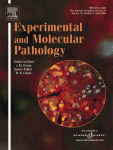LeeLemonoil
Member
- Joined
- Sep 24, 2016
- Messages
- 4,265
https://www.researchgate.net/public...tion_by_Sebastiano_Venturi_and_Michel_E_Begin
ntroduction Evolution of the hominin lineage is marked by progressive brain expansion and complexity concomitant with coordinated changes in other morphological and behavioral traits that characterize speciation events. In addition to gene variation, changes in climate, habitat, and diet are well-recognized environmental stimuli for evolutionary change. Iodine is an environmental stimulus to which living organisms react, a point particularly evident in amphibian metamorphosis and potentially also in hominin evolution. In toto, selection pressures effecting evolutionary change involve biological mechanisms permitting adaptation and evolution under changing environmental conditions. A common biological control mechanism could potentially coordinate a suite of physiological, morphological, and behavioral changes as important as brain evolution. We contend here that such a mechanism was hormonal and that thyroid hormone and iodine were pivotal components of such a mechanism. The principal fossil sites of hominins correlated in space and time with volcanic and fissural local or nearby iodine sources (Borensztejn, 2005). In vertebrates, iodine is incorporated into thyroid hormone in the thyroid gland. Crockford (2003, 2008) provided solid evidence that changing thyroid function, specifically rhythms of thyroid hormone secretion, is crucial for speciation events taking place over decades. The same thyroid hormone mechanism can be applied to the process of humanizing australopithecines. Here, we postulate a link between thyroid function, iodine, and evolutionary changes as they apply to the evolution of hominins and, more specifically, the large brain of Homo sapiens. We emphasize changes in habitat and the connection between enhanced dietary availability of iodine, selenium, and polyunsaturated fatty acids as brain-selective nutrients necessary for thyroid function and hominin brain expansion.
https://www.researchgate.net/public...205_2014_Part_2_S_Venturi_M_Venturi_2014_LINK
The structural, metabolic and synergic actions of iodine and polyunsaturated fatty acids (PUFAs) in life evolution and in the ‘membrane lipid language’ of cells are reviewed. Iodine is one of the most electron-rich atoms in the diet of marine and terrestrial organisms and, as iodide (I-), acts as an ancestral electron-donor through peroxidase enzymes. It is the most primitive inorganic antioxidant in all iodide-concentrating cells, from primitive marine algae to more recent vertebrates. About 500 million years ago, the thyroid cells originated from the primitive gut of vertebrates, then migrated and specialized in the uptake and storage of iodocompounds in the thyroid, a new follicular organ. In parallel, ectodermic cells, differentiated into neuronal cells, became the primitive nervous system and brain. Both these cells synthesized iodolipids, as novel ‘words’ of the chemical ‘lipid language’ devoloped among cell membranes during the evolution of life, for better adaptation to terrestrial environments. The study of iodolipids is a new area of investigation, which might be useful for research on apoptosis, carcinogenesis and degenerative diseases, as well as for trying to understand some problems discussed regarding human evolution.
ntroduction Evolution of the hominin lineage is marked by progressive brain expansion and complexity concomitant with coordinated changes in other morphological and behavioral traits that characterize speciation events. In addition to gene variation, changes in climate, habitat, and diet are well-recognized environmental stimuli for evolutionary change. Iodine is an environmental stimulus to which living organisms react, a point particularly evident in amphibian metamorphosis and potentially also in hominin evolution. In toto, selection pressures effecting evolutionary change involve biological mechanisms permitting adaptation and evolution under changing environmental conditions. A common biological control mechanism could potentially coordinate a suite of physiological, morphological, and behavioral changes as important as brain evolution. We contend here that such a mechanism was hormonal and that thyroid hormone and iodine were pivotal components of such a mechanism. The principal fossil sites of hominins correlated in space and time with volcanic and fissural local or nearby iodine sources (Borensztejn, 2005). In vertebrates, iodine is incorporated into thyroid hormone in the thyroid gland. Crockford (2003, 2008) provided solid evidence that changing thyroid function, specifically rhythms of thyroid hormone secretion, is crucial for speciation events taking place over decades. The same thyroid hormone mechanism can be applied to the process of humanizing australopithecines. Here, we postulate a link between thyroid function, iodine, and evolutionary changes as they apply to the evolution of hominins and, more specifically, the large brain of Homo sapiens. We emphasize changes in habitat and the connection between enhanced dietary availability of iodine, selenium, and polyunsaturated fatty acids as brain-selective nutrients necessary for thyroid function and hominin brain expansion.
https://www.researchgate.net/public...205_2014_Part_2_S_Venturi_M_Venturi_2014_LINK
The structural, metabolic and synergic actions of iodine and polyunsaturated fatty acids (PUFAs) in life evolution and in the ‘membrane lipid language’ of cells are reviewed. Iodine is one of the most electron-rich atoms in the diet of marine and terrestrial organisms and, as iodide (I-), acts as an ancestral electron-donor through peroxidase enzymes. It is the most primitive inorganic antioxidant in all iodide-concentrating cells, from primitive marine algae to more recent vertebrates. About 500 million years ago, the thyroid cells originated from the primitive gut of vertebrates, then migrated and specialized in the uptake and storage of iodocompounds in the thyroid, a new follicular organ. In parallel, ectodermic cells, differentiated into neuronal cells, became the primitive nervous system and brain. Both these cells synthesized iodolipids, as novel ‘words’ of the chemical ‘lipid language’ devoloped among cell membranes during the evolution of life, for better adaptation to terrestrial environments. The study of iodolipids is a new area of investigation, which might be useful for research on apoptosis, carcinogenesis and degenerative diseases, as well as for trying to understand some problems discussed regarding human evolution.
Last edited:

